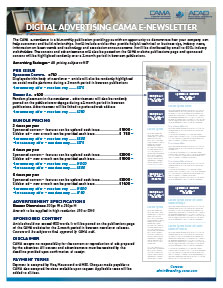Issue 4 - August, 2021
- Brian Emmerton, RD
The Sweet Story on Sugar
Much attention has been focused on health risks associated with Canadian diets for many years and after a heightened attention about sodium and salt intake, the next bandwagon coming to the forefront appears to be sugar.
Why is sugar becoming the next ‘naughty’ ingredient? The fact is that we Canadians have a love for the sweet taste and pleasure derived from the both natural (fruit sugar in fruit juices) and added sugars (found abundantly in many products to enhance the flavour) in our favourite foods. Increasing obesity rates (particularly in young children), higher incidences of diabetes and heart disease, emerging diet trends focusing on sugar elimination like Keto, and an increased attention to ingredients and food sources has raised the attention to this potential big bad category!
The question is, do we consume too much sugar? Well, many health experts will say yes, but believe it or not, there are some interesting trends that demonstrate we are actually consuming less sugar than we used to:
• The overall amount of added sugar consumption in Canada has declined in the last 20 years. Food preferences and intakes have changed, while ingredients and formularies of ingredients that contain sugar have also undergone small reductions. The proliferation of sugar substitutes has greatly increased as had variety of low-calorie products (sugar free soft drinks in particular), as consumers looks for lower calorie options with the same sweet sensation.
• Canadians consume an average 30% less sugar than our American counterparts. It is predominantly due to the lower amount of regular soft drink consumption. Is it because of fewer choices or a higher proliferation of low-calorie carbonated beverages? The answer is no. Canadians simply reach for water or unsweetened beverages more often (and remember water and sparkling water consumption continues to climb!).
In recent years, some provinces have tried to regulate consumption of sugar through health programs such as school food guidelines and standards. These regulations impacted our industries ability to offer traditional choices that were available through vending and self-serve areas. For the most part, Canada currently does not have any nutritional guidelines related to the quantify of sugar Canadians should or should not consume, however Health Canada suggests choosing foods with little or no added sugars.
So how will this impact our business going forward? Health Canada’s new nutrition labelling requirements which have been worked on for years, are scheduled to be completely implemented by December 31, 2021. In addition to sugar being a mandatory item on the nutrition label, packaging requirements will also change under this new legislation as symbols indicating a product is high in sugar will have to be identified. Stay tuned!
How do we ensure our business thrives even given these potential bumps in the road? Here are a few things to pay attention to:
• Choice & Selection. Offering customers choice and selection in all categories ensures that you are providing a variety of options without added or natural sugar; both impulse purchases and regular frequent offerings can help you demonstrate your commitment to healthy choices. Some customers may look for more natural sources of sugar (i.e. honey) as a preference. Remember to display a mix of both sweet and salty snack options in your impulse section of micro markets, feature areas, as well as in any combo packages you offer.
• Sugar Free Options: This trend is growing, we recommend that 20% of your beverage offerings are free of sugar (e.g. water, sparking water beverages such as Bubly) or low-calorie offerings. It may seem like a lot, however over your entire portfolio is it quite simple to do
• Say Tea! There is an opportunity to focus on tea as it is currently a growth category. Hot and cold tea consumption continues to climb and provides strong revenue opportunities while offering choices with health benefits (and interesting exotic flavours)
Whether your customers have a sweet or salty tooth, staying on top of trends is critical. It can help to keep your customers interested, demonstrate that your services reflect the current marketplace drivers, and provide your business with a competitive edge.
About the Author:
Brian Emmerton is a Registered Dietitian and the Vice President and General Manager of Complete Purchasing Services Inc, a leading supply chain solutions provider for non-commercial clients and hospitality organizations across Canada. Brian has worked and researched consumer behaviors for over 30 years to assist clients in following trends and practices that can drive revenue and growth opportunities. Learn more about how Complete Purchasing Services can help your organization by visiting eCPS.ca.


%202023.png)


